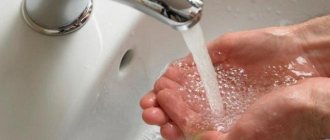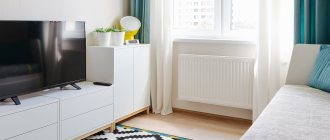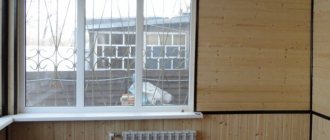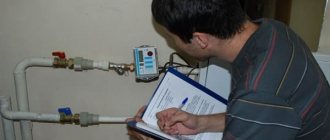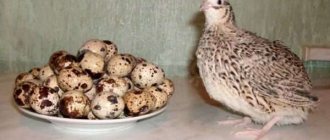When do you turn on the heating?
When it gets colder until heat is supplied, living in an apartment becomes uncomfortable and people are increasingly concerned about the timing of the heating season.
Decree of the Government of the Russian Federation dated May 6, 2011 No. 354 clearly defines the beginning and end of the season for supplying heat to residential buildings. According to the document, heating should be supplied to apartments in the fall, when the average daily outdoor temperature is below 8 °C for 5 days in a row. And turn it off in the spring at a constant temperature above 8 °C (read more - When do you turn on the heating in an apartment in Moscow and other regions?).
Thus, if the average daily temperature changes from +5°C to +10°C over several days, then it is too early to talk about turning on the heat.
Air temperature standards according to GOST
The temperature parameters of residential premises are regulated by regulations - SanPiN 2.1.2.2645-10, GOST R 51617-2000 Housing and communal services and general technical conditions, where the temperature regime of rooms is regulated from 18 ° C in winter, from 20 ° C in summer. There is a standard in Government Decree No. 354 on corner rooms and cold regions, where a different acceptable standard is adopted.
The standard air temperature in residential premises is set not lower than +18°C (in corner rooms +22°C), in areas with the coldest five-day period (provision 0.92) -31°C and below, the temperature regime is set to +20°C ( in corner rooms +22°C). Failure to comply with the standard, rather than comfortable, thermal regime is considered a violation.
In corner apartments
Previously, GOST indeed established special rules for corner apartments - 2 degrees higher than usual. Today, the temperature regime is established and regulated by Decree of the Government of the Russian Federation dated May 6, 2011 No. 354.
Exterior walls
The creators of SNiP 02/23/2003 believe that the temperature difference between the internal air and the external surface should be no more than 4 degrees. That is, if the minimum limit for a living space is 18 °C, then the wall on average should not be colder than 14.
When this rule is violated, we can conclude that the house is not insulated enough, and perhaps the seams require updating. The management company servicing the building should take care of this.
Floor
In accordance with SNiP [35], the temperature of the floor surface in residential premises should not be lower than 16 ° C (as a rule, it exceeds the minimum permissible and ranges from 18 to 20 ° C.).
SNiP 41-01.2003 establishes the normal temperature for heated floors:
- 26 °C for rooms where people are constantly present;
- 31 °C for premises where people stay temporarily.
Children's institutions are recommended to maintain the floor at a maximum temperature of 24 °C.
Air temperature standards for the heating season in an apartment 2021
The main legislative act regulating temperature standards in premises is GOST 30494-2011. “Residential and public buildings. Indoor microclimate parameters" .
They stipulate the optimal and permissible temperature standards used for apartment buildings and various premises:
- kindergartens;
- administrative buildings.
It follows from the document that the standard temperature in the apartment should be from +18°C to +24°C .
| Period of the year | The name of a room | Air temperature, °C | |
| optimal | acceptable | ||
| Winter | Living room | 20-22 | 18-24 (20-24) |
| At the temperature of the coldest five-day period: -31 °C and below | 21-23 | 20-24 (22-24) | |
| Kitchen | 19-21 | 18-26 | |
| Toilet | 19-21 | 18-26 | |
| Bathroom, combined toilet | 24-26 | 18-26 | |
| Facilities for recreation and study sessions | 20-22 | 18-24 | |
| Inter-apartment corridor | 18-20 | 16-22 | |
| Lobby, staircase | 16-18 | 14-20 | |
| Storerooms | 16-18 | 12-22 | |
| Summer | Living room | 22-25 | 20-28 |
In brackets is the indoor temperature for nursing homes and families with disabled people.
What determines the optimal temperature of an apartment?
The temperature regimes that provide comfort to households depend on the climatic location of the home. In the southern regions and in the northern areas, as well as in western and eastern latitudes, the normal house temperature will be different.
As for countries, their climate is also different. And since the components of climate, in addition to temperature, are atmospheric pressure along with air humidity, the acceptable thermal range is set by them together.
For example, the humidity of the home’s atmosphere: the high humidity characteristic of hot countries requires higher values for the normal temperature of the home, because heat-intensive, moisture-saturated air actively takes away the heat of human bodies.
Temperature formation
The temperature inside a home changes due to the periodic change of seasons. Summer is always warmer than winter. In a temperate climate zone, the acceptable room temperature in the warm season will be +22...+25°C, in the cold season - +19...+22°C. Considering the duration of exposure, the seasonal temperature difference, although apparently small, still matters.

Placing split systems in the main rooms of the apartment will provide the necessary atmospheric parameters during the warm season. Household air conditioners are not capable of fully heating a home at low winter temperatures.
Finally, a comfortable temperature for a person in various rooms of an apartment is associated with his gender and age characteristics.
Let us note right away that personal preferences for one or another temperature regime do not mean health benefits. Excessive overheating, for example, refusal of air conditioning in hot weather, or hypothermia of a room due to a window open in cold weather, certainly harms the human body.
The maintained optimal air temperature in the room must correspond to the temperature needs of household members of different genders and ages. For example, for women, a comfortable home atmosphere will be 2-3°C higher than for men - women are more thermophilic.
Young children need a room with a stable temperature in the range of +20°C...+23°C. Temperature changes are especially difficult to tolerate for an infant, whose body is not yet capable of full (adult) thermoregulation.
For the room where the baby is located, it is extremely important to maintain a stable temperature level of +23°C...+24°C all year round, since a small child overheats and freezes much faster than adults.
Dangers of cold rooms
In medical terminology, hypothermia is called hypothermia - a condition that causes profound harm to the human body, contributing to the development of diseases of the nervous system and respiratory diseases.
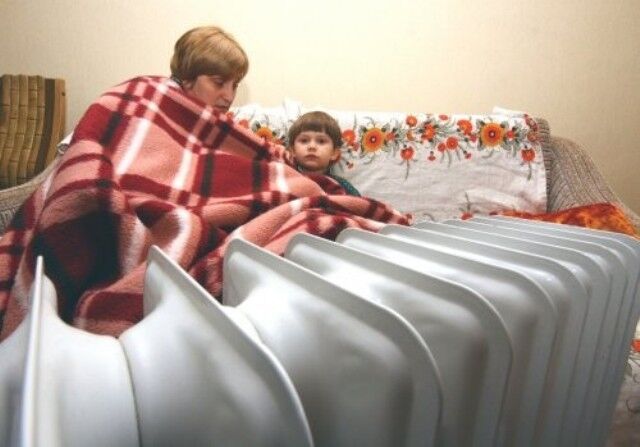
In attempts to compensate for heat loss, the human body concentrates heat supply on the organs of the body and head. Therefore, warming the extremities is necessary.
Once in a cold atmosphere, our body strives to block hypothermia by using energy resources and sharply increasing heat transfer. This works when exposed to the cold for short periods of time.
However, with prolonged exposure to low temperatures, the body’s resources to compensate for heat loss are insufficient and the body cools below +36°C.
A characteristic sign of hypothermia is shivering, stimulated by the body in response to cold - excessive muscle activity produces heat. Hands and feet become cold because the blood vessels in them contract to reduce blood flow and reduce overall body cooling.
A decrease in body temperature below +35°C will cause a slowdown in the heart rate, breathing and weaken mental activity.
Hypothermia is especially dangerous for young children, whose bodies are physically smaller than adults and are not able to quickly produce heat. A child's body suffers from cold much more deeply than an adult.
Risks of excessively warm rooms
A hot room atmosphere creates ideal conditions for the development of pathogens that cause infectious diseases, primarily skin and intestinal diseases.
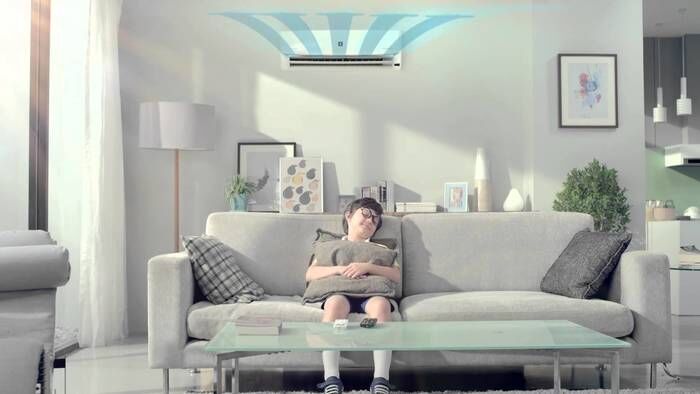
Being under a direct flow of conditioned air cooled below +22°C will result in thermal shock to the body. You cannot direct the air generated by the air conditioner towards yourself.
Hyperthermia has a detrimental effect on the human body, especially on the heart. In the hot microclimate of the room, a person sweats, which is why he loses a significant amount of moisture.
The blood thickens and becomes “heavy,” requiring the heart to work harder to pump it into the blood vessels. In case of cardiovascular diseases, such loads will be extremely heavy.
Dehydration, caused by the body's desire to balance external and internal temperatures, worsens the water and electrolyte balance of the human body and weakens the nervous system.
An overly warm bedroom atmosphere contributes to the development of insomnia by interfering with normal body thermoregulation. In a moderately cool microclimate, the body quickly moves into the deep phase of sleep, redistributing internal heat from the center of the body to the extremities.
Normal temperature in a corner apartment during the heating season
The new GOST does not say anything about houses with corner apartments; accordingly, the value is taken according to the standards of a standard living room. In the old GOST R 51617-2000 it was indicated that the value increases by 2 degrees.
Download the new GOST 30494-2011, current for 2021.
Deviations from the norm are allowed:
- for optimal - 2 °C;
- for permissible - 3 °C;
Violation by utility services that underestimate the heat supply to apartments entails both administrative and criminal liability.
How to measure the air temperature in an apartment?
It is not very easy to obtain objective figures for the measurements taken, but if you wish, you can be patient and eventually achieve a recalculation of the heat payment.
To measure the air temperature in a room correctly, you need to adhere to a number of rules:
1. Measurements are taken at an outside temperature no higher than -5°C.
2. Take measurements on a cloudy day. The rays of the sun, penetrating into the room through the window, additionally warm it up, and the readings on the device will not correspond to the actual picture.
3. Eliminate heat leakage through unsealed windows and cracks.
4. Measure temperature:
- in a private house - in two rooms of more than 5 sq.m., having 2 external walls or a large window (an area of 30% of all walls in the room);
- in an apartment building - measurements are taken on the first and last floors, in two rooms of more than 5 sq.m.
5. The measuring device should be located at a distance of at least half a meter from the outer wall and battery, at a height from the floor in rooms located mainly:
- in a sitting position - 10; 60 and 170 cm;
- standing or walking - 10; 110 and 170 cm.
How to measure air temperature
You can take measurements in rooms using a mercury or electronic thermometer.
Is it possible to do this yourself
If there are suspicions that the air is colder than the norm, an experiment carried out independently will help make sure. But it will not be possible to use these results as official confirmation of violations on the part of the management company.
Dear readers! To solve your problem right now, get a free consultation
— contact the lawyer on duty in the online chat on the right or call: +7 (499) 938 6124 — Moscow and region.
+7 (812) 425 6761 — St. Petersburg and region. 8 (800) 350 8362 - Other regions of the Russian Federation You will not need to waste your time and nerves
- an experienced lawyer will solve all your problems!
In order for the act to be considered a legal document, measurements must be made by a government organization using special certified equipment.
A home thermometer does not meet these criteria. But independent research makes sense before calling a competent organization, as it will make it possible to verify the correctness of suspicions.
How to measure correctly
You can use a home thermometer; buying a specialized one is pointless. The measurements must be taken by an accredited organization, but they cost much more. When experimenting, you should take into account the following nuances:
- first you need to make sure that the windows and doors are tightly closed;
- the device should not be exposed to heating or cooling devices, direct sunlight;
- when measuring, you do not need to hold it in your hands so as not to increase the readings;
- allow the thermometer to record readings (10 minutes);
- more objective results will be obtained by using several different instruments;
- You need to measure the temperature of at least two living rooms, depending on the construction features of the apartment;
- It is advisable to take measurements in the center of the rooms and display the average result.
If the temperature in the apartment is below normal, what should you do?
If during the measurements a deviation from the norm was found to be smaller, it is necessary to notify the utility service or management company that services the apartment building. She sends an emergency team to draw up a measurement report. This is an official document containing a number of details, on the basis of which a decision is made to recalculate utility bills for services. It is drawn up in two copies, one of which remains in the hands of the tenant.
Certificate of checking the temperature in the apartment
If there is a significant deviation from the norm, the management company is obliged to recalculate heating payments for the month in which these deviations were discovered.
The law establishes payment reduction figures - they amount to 0.15% per hour when a temperature deviation from the standard value is detected.
For example. During the heating season, the air temperature in the corner room is fixed at 16 °C (the norm is +20 °C) 14 hours from the design period (it is 720 hours). After taking readings from an individual metering device, the thermal energy consumption for the past month amounted to 0.7 Gcal at a tariff of 1,900 rubles. 32 kopecks for 1 Gcal. Since the air temperature was below normal, the amount of payment for heating is reduced by 0.15% for each hour when it is recorded in the act.
Recalculation of utility bills for heating
- The fee for 14 hours when heating was provided of inadequate quality is reduced by: 0.15% x 14 hours = 2.1%.
- Standard payment for heat in the billing period (30 days or 720 hours): 0.8 Gcal multiplied by the tariff of 1,900 rubles. 32 kopecks total 1,520 rub. 25 kopecks
- As a result, after the reduction we get: 1,520 rubles. 25 kopecks x (100% - 2.1%) = 1,488 rubles. 32 kopecks
There are cases when patient residents measure their temperature for several days and during this period it constantly falls short of the norm. Then the fee reduction becomes significant. But not every management company is ready to unquestioningly recalculate the cost of heating services. Often, dissatisfied tenants can only defend their rights in court.
Please note that heat payments can only be recalculated once a calendar year. The process of registration and collection is quite lengthy, requiring scrupulousness and a large number of documents.
Problems with the heating system
Such problems, as they say, lie on the surface. Their consequence is not only barely warm radiators, but also increased humidity due to freezing and thawing of the walls. This inevitably leads to the formation of fungus. Of course, such conditions are far from normal for living. Typical signs of heating problems:
- small leak in the radiator,
- noise and bubbling in pipes,
- difference in radiator temperature within one apartment,
- heat distribution is uneven across the floors of the house,
- problems in the apartment building system as a whole.

When preparing apartment buildings for the heating season, the management company is obliged to check all systems. If any of them fails, then a number of actions must be taken to eliminate it.
Factors that determine temperature
The room air temperature depends on many external and internal factors. External factors such as climate and changing seasons play a significant role.
The optimal temperature in an apartment in the northern region differs significantly from that in the south. When we talk about climate, we mean not only air temperature, but also humidity and pressure. With high humidity, the optimal temperature is higher.
The normal temperature in an apartment during the heating season is lower than in summer. The weather outside significantly affects the microclimate inside the apartment. Average norms for different seasons:
- Cold season: 19−22 degrees;
- Hot time: 22−25 degrees.
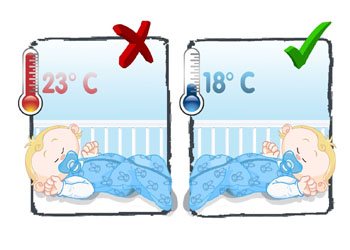
Temperature in the nursery
Due to seasonality and temperature changes, many people may feel discomfort.
The human factor also significantly affects the determination of normal temperature in the house. If a newborn child lives in the apartment, then it is necessary to exclude temperature changes and too low or high readings. If there are problems with heating, then you definitely need to draw up a report on measuring the temperature of the hot water supply in the apartment, a sample of which can be easily found on the Internet.
Influence of internal factors on temperature
The characteristics of the room and heating system determine the temperature in the apartment in winter and summer. The microclimate is affected by:
- Heat loss. To reduce heat loss, insulation, cladding of the house and installation of energy-saving double-glazed windows are carried out. Windows play a big role in saving heat;
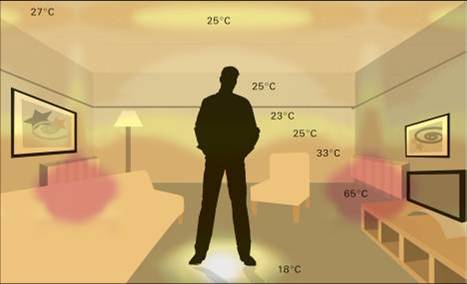
Temperature distribution graph in the apartment
- Volume of heating system elements. Large batteries produce significantly more heat. If you decide to add sections, it is better to contact a specialist. Adding new sections will lower the pressure in the heat exchanger system. This heating is uneven and inefficient;
- Heating system operating speed. Directly depends on the pressure in the system. Slow coolant circulation contributes to heat loss;
- System layout. Wiring heating pipes is a serious process that determines the temperature in the apartment. The problem may be in the wiring diagram itself, the installation of system elements and the appropriate pipe diameter.
Important: if part of the battery is cold, you need to contact a specialist to check the entire system. The battery should be heated evenly.

